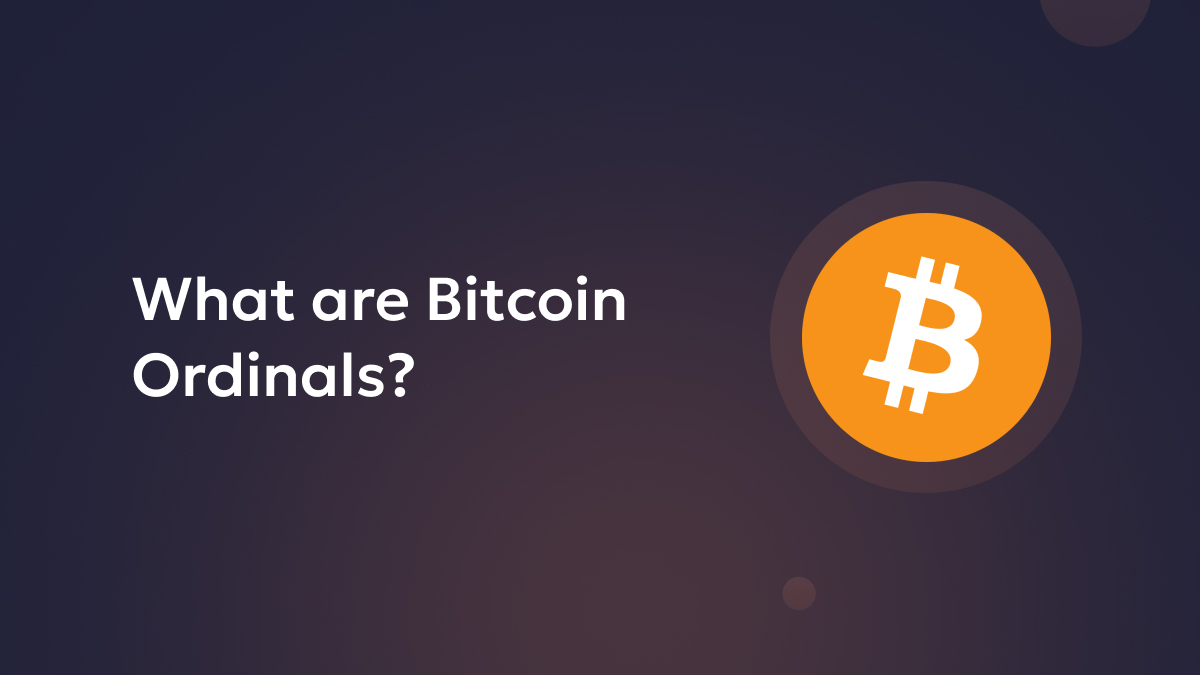Bitcoin Ordinals represent a groundbreaking approach to creating unique digital assets on the Bitcoin blockchain, effectively functioning as non-fungible tokens (NFTs). Unlike traditional NFTs, which often rely on secondary protocols or layer-2 solutions, Bitcoin Ordinals utilize the Bitcoin mainnet itself. This innovation allows for the inscription of additional data directly onto individual satoshis—the smallest unit of Bitcoin—enabling the creation of unique digital artifacts.
Understanding Bitcoin Ordinals
At its core, the Ordinals protocol assigns a unique serial number to each satoshi based on the order in which they were mined. This numbering system is essential for tracking the ownership and transfer of individual satoshis. The process of inscribing involves attaching extra data, such as images, videos, or text, to these numbered satoshis. This capability was made possible by the implementation of the Taproot upgrade in 2021, which expanded the data capacity of Bitcoin transactions to nearly 4 MB, allowing for more complex inscriptions.
The concept of Ordinals was introduced by Casey Rodarmor, a software developer who sought to create a system for tracking and transferring individual satoshis. By assigning unique identifiers to each satoshi, Rodarmor’s protocol opened up new possibilities for creating and managing digital assets on the Bitcoin network.
How Bitcoin Ordinals Work
The Ordinals protocol operates without altering the Bitcoin protocol, meaning it does not require any additional layers or modifications to the existing system. Each satoshi is assigned a sequential number, allowing users to track and manage them individually. When a satoshi is inscribed with data, it becomes a unique digital asset, or what some refer to as a “Digital Artifact.”
This system allows for the creation of NFTs directly on the Bitcoin blockchain, where the metadata of each NFT is stored within the witness data of a transaction. In contrast to many NFTs on other blockchains, where the actual digital asset may reside off-chain, Bitcoin Ordinals benefit from the inherent security and immutability of the Bitcoin blockchain.
The numbering system for satoshis follows a specific order based on when they were mined and the order in which they appear in the coinbase transaction of each block. This system ensures that each satoshi has a unique identifier, making it possible to track and manage them individually.
The Inscription Process
To create a Bitcoin Ordinal, users must perform a transaction that includes the desired data as part of the inscription. Once the transaction is confirmed and added to a block, the inscribed data becomes permanently part of the Bitcoin blockchain. This permanence ensures that the digital asset cannot be altered or removed, providing a level of authenticity and provenance that is highly valued in the digital art and collectibles market.
The inscription process involves several steps:
- Prepare the content: The user selects the digital content they wish to inscribe, such as an image, video, or text file.
- Create the inscription transaction: Using specialized software, the user creates a transaction that includes the content data in the witness field of the transaction.
- Sign and broadcast the transaction: The user signs the transaction with their private key and broadcasts it to the Bitcoin network.
- Confirmation: Once the transaction is confirmed and included in a block, the inscription becomes permanent and immutable.
The Role of Satoshis
Satoshis (or “sats”) are the fundamental building blocks of Bitcoin, with one bitcoin equivalent to 100 million satoshis. The Ordinals protocol allows for the individual tracking of these satoshis, transforming them from fungible units into unique, non-fungible assets. This transformation is akin to taking a standard coin and marking it with a unique design, making it collectible and distinct from its counterparts.
The use of satoshis as the base unit for Ordinals provides several advantages:
- Granularity: With 100 million satoshis per bitcoin, there is a vast number of potential unique assets that can be created.
- Divisibility: While each satoshi is unique, bitcoins remain divisible, allowing for fractional ownership of inscribed assets.
- Compatibility: By working with existing Bitcoin units, Ordinals maintain compatibility with the broader Bitcoin ecosystem.
Advantages of Bitcoin Ordinals
The introduction of Bitcoin Ordinals has several notable advantages:
Security: Bitcoin Ordinals leverage the robust security of the Bitcoin network, which operates on a proof-of-work consensus mechanism. This system has proven resilient against attacks and vulnerabilities, ensuring that inscribed data remains secure.
Immutability: Once data is inscribed onto the Bitcoin blockchain, it becomes permanent and unchangeable. This immutability is a significant advantage over traditional NFTs, which may rely on external servers or databases that can be altered.
Scarcity: The vast number of satoshis available on the Bitcoin blockchain allows for the creation of unique digital assets that can be verifiably scarce. This scarcity is appealing to creators and collectors alike, fostering a new market for digital collectibles.
Decentralization: By utilizing the Bitcoin mainnet, Ordinals benefit from the decentralized nature of the network, reducing reliance on centralized platforms or intermediaries.
Interoperability: As part of the Bitcoin ecosystem, Ordinals can potentially interact with other Bitcoin-based applications and services, opening up new possibilities for integration and use cases.
Controversies and Challenges
Despite the excitement surrounding Bitcoin Ordinals, their introduction has not been without controversy. Some members of the Bitcoin community express concerns that the use of Ordinals for creating NFTs may lead to network congestion and increased transaction fees. Critics argue that this activity could be perceived as spam, detracting from Bitcoin’s primary purpose as a digital currency.
Additionally, the lack of formal recognition of ordinal theory within the Bitcoin protocol raises questions about the long-term viability and acceptance of Ordinals. While many users and developers are enthusiastic about the potential of Bitcoin NFTs, others remain skeptical about their impact on the network.
Some of the key challenges faced by Bitcoin Ordinals include:
- Scalability: As the number of inscriptions grows, there are concerns about the impact on Bitcoin’s transaction capacity and fees.
- User experience: Creating and managing Ordinals currently requires technical knowledge, which may limit adoption among mainstream users.
- Regulatory uncertainty: The legal status of Bitcoin Ordinals in various jurisdictions remains unclear, potentially affecting their widespread use and acceptance.
- Community division: The debate over the appropriateness of using Bitcoin for NFT-like assets has led to divisions within the Bitcoin community.
The Future of Bitcoin Ordinals
As the Bitcoin Ordinals ecosystem continues to evolve, it is likely that we will see further innovations and applications of this technology. The growing interest in Bitcoin-based NFTs has already led to the emergence of various marketplaces and platforms dedicated to facilitating the buying, selling, and trading of Ordinals.
Moreover, as more users become familiar with the concept of Digital Artifacts, we may witness an expansion of the types of content that can be inscribed and the creative possibilities available to artists and developers. The integration of Bitcoin Ordinals into existing Bitcoin wallets and services will also play a crucial role in their adoption and usability.
Some potential future developments include:
- Enhanced tools and platforms for creating and managing Ordinals, making them more accessible to non-technical users.
- Integration of Ordinals with decentralized finance (DeFi) applications, potentially enabling new forms of collateralization and lending.
- Development of standards for Ordinal metadata and attributes, similar to token standards on other blockchain platforms.
- Exploration of use cases beyond digital art, such as certificates, licenses, and other forms of digital ownership.
Conclusion
Bitcoin Ordinals represent a significant advancement in the realm of digital assets, allowing for the creation of unique NFTs directly on the Bitcoin blockchain. By assigning individual identities to satoshis and enabling the inscription of data, the Ordinals protocol opens up new avenues for creativity and ownership within the Bitcoin ecosystem.
While challenges and controversies remain, the potential for Bitcoin Ordinals to reshape the landscape of digital collectibles and art is undeniable. As the technology matures and the community adapts, Bitcoin Ordinals may well become a cornerstone of the Bitcoin network, blending the worlds of cryptocurrency and digital art in innovative ways.
The future of Bitcoin Ordinals will likely be shaped by ongoing debates within the community, technological advancements, and the creative applications discovered by developers and artists. As with many innovations in the blockchain space, the full impact and potential of Bitcoin Ordinals may only become apparent as the ecosystem grows and evolves over time.






